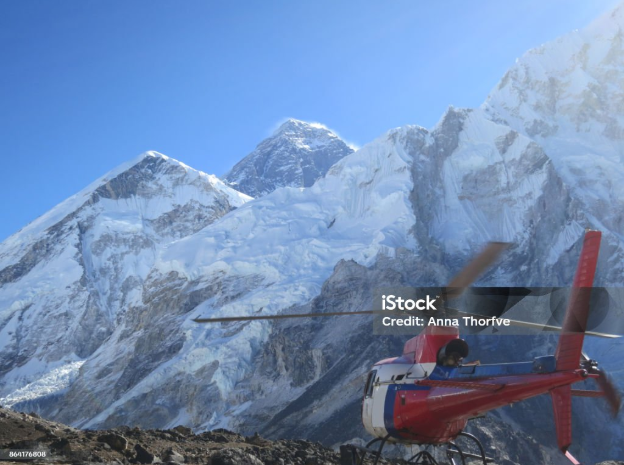The Mount Everest Base Camp Trek (EBC) Trek is a world-renowned adventure that takes trekkers to the base of the tallest mountain on Earth, Mount Everest (8,848.86 meters). This journey is a blend of awe-inspiring mountain vistas, rich Sherpa culture, and an unparalleled sense of achievement. Whether you’re an experienced trekker or a first-time adventurer, the trek offers a transformative experience that few destinations can rival.
Highlights of the Mount Everest Base Camp Trek
- Unmatched Mountain Scenery
The trek provides breathtaking views of towering Himalayan peaks, including Mount Everest, Ama Dablam, Lhotse, and Nuptse. Every step of the trail reveals stunning landscapes, from lush forests and terraced farmlands to alpine meadows and glacial moraines. - Namche Bazaar: The Gateway to Everest
Perched at 3,440 meters, Namche Bazaar is a vibrant Sherpa town where trekkers acclimatize and explore local markets. The town offers a perfect blend of tradition and modernity, with cozy tea houses, bakeries, and cultural sites. - Tengboche Monastery
This spiritual landmark, surrounded by some of the world’s highest peaks, is a place of serenity and reflection. Tengboche Monastery is a must-visit for its breathtaking backdrop and spiritual significance. - Everest Base Camp and Kalapatthar
Reaching Everest Base Camp (5,364 meters) is the trek’s pinnacle moment. From here, trekkers stand amidst the grandeur of the Himalayas. A hike to Kalapatthar (5,545 meters) offers unrivaled sunrise or sunset views of Everest.
Trekking Itinerary
A typical 12–14 day Everest Base Camp Trek itinerary includes:
- Day 1: Fly from Kathmandu to Lukla and trek to Phakding.
- Day 2–3: Trek to Namche Bazaar and acclimatization day.
- Day 4–6: Trek to Tengboche and Dingboche, with acclimatization.
- Day 7–8: Trek through Lobuche to Gorakshep and visit Everest Base Camp.
- Day 9: Hike to Kalapatthar and descend to Pheriche.
- Day 10–12: Return trek to Lukla and flight to Kathmandu.
Best Time for the Trek
The ideal seasons for the EBC Trek are spring (March to May) and autumn (September to November). These periods offer clear skies, moderate temperatures, and optimal trekking conditions. Winter treks are possible but require extra preparation due to colder temperatures and potential snowfall.
Physical and Mental Preparation
The trek is moderate to challenging, involving daily walks of 5–8 hours over rugged terrain. Good physical fitness and mental resilience are essential. Proper acclimatization is crucial to avoid altitude sickness, as the trail reaches significant heights.
Permits Required
Trekkers must obtain:
- Sagarmatha National Park Entry Permit (approx. $30).
- Khumbu Pasang Lhamu Rural Municipality Permit (approx. $20).
Cost Overview
The cost of the EBC Trek ranges from $1,200 to $2,000, depending on the level of service. Costs typically cover permits, flights to Lukla, guides, porters, accommodations, and meals.
Tips for a Successful Trek
- Pack Wisely: Bring appropriate gear, including warm clothing, trekking boots, and sleeping bags.
- Hydrate and Acclimatize: Drink plenty of water and follow your guide’s advice on acclimatization.
- Hire a Guide and Porter: Their expertise ensures safety and enhances the experience.
- Train in Advance: Build your stamina with regular cardio and strength exercises.
Conclusion
The Mount Everest Base Camp Trek is a bucket-list adventure that combines natural beauty, cultural immersion, and personal accomplishment. Standing at the base of the world’s highest peak is a moment of awe and inspiration that stays with you forever. For those ready to challenge themselves and embrace the magic of the Himalayas, this trek promises memories and experiences that transcend words.

